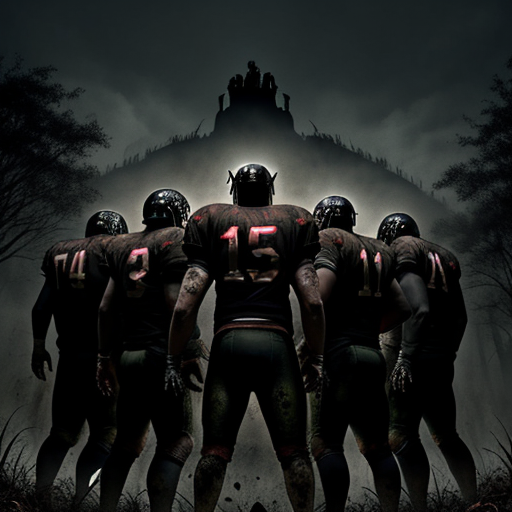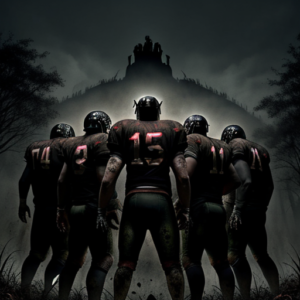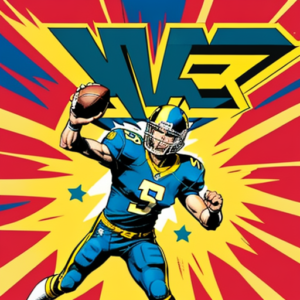The first slate of the NFL DFS season is always replete with chaos as depth charts take full shape, coachspeak becomes roster spots and roles, and teams run out of time with injury obfuscation. In this situation, building lineups, or even knowing which players will be in action for which teams can be a chore. This article is a weekly attempt to wrangle all of the chaos into an orderly setup that can be input into any industry optimizer to ensure the creation of highly correlated stacks with strong constructions and an extremely wide variety of potential combinations. The groups below are simply recommendations, players can be added or removed according to personal preference, news, or differentiated sets of projections. Current groups are based on our custom projections, which are FREE for Week 1, and a review of all injury and role situations around the league. An update will be provided early Sunday morning to account for any news or changes, as well as any recommended player boosts for combination and exposure management.
This article focuses on building lineups with a quality foundation by utilizing the powerful Groups and Rules/Limits tools within the industry’s optimization tools. All of the concepts and pairings included below can be applied to hand-building as well. The goal is to create lineups that have high-scoring correlation and take advantage of combined outcomes within stacks while limiting the likelihood of building inefficient or negatively correlated entries for a full slate of NFL DFS lineups.
This video was made in a former life and features a detailed demonstration of how to apply these concepts in one leading optimizer tool: Fantasy Cruncher – How-To Video
Week 1 DraftKings & FanDuel NFL DFS Stacks & Optimizer Groups
Overview
Rules and limits are powerful tools for lineup creation for NFL DFS where our primary focus is creating highly correlated lineups via stacking players from the same game. Lineups will typically be coordinated around the quarterback selection, which informs at least one pass-catcher choice, establishes a budget, eliminates a defense, and sets the tone for the lineup. We will typically look to correlate a quarterback and at least one of his pass-catchers in every lineup, with most of those including a skill player from the opposing team who will have a chance to support the stack in a high-scoring game that drives offense on both sides to create additional correlated scoring potential. Stacking multiple pass-catchers in the same lineup is a sound approach as well, though there are typically overall ceilings on how much volume is available at any given position. We do not typically include running backs who are not pass-catchers as priorities in NFL DFS groups, they typically stand alone with the selection of the quarterback-based stack informing remaining salary which then informs the running back selections. High-volume backs and pass catchers out of the backfield can be included in the groups utilized below, but it is frequently not necessary to do so with the very best players, they arrive in lineups without help.
The following rules and limits are typically applied in an optimizer’s Advanced Options menu. Notes are included to elucidate the reasons behind each rule and to explain what it does during the lineup creation process. These settings can typically be saved for re-use, which is highly recommended. Saving the Week 1 groups that will be created below is also a very good idea to save time with updates instead of recreation each week. These groups are created manually, but most optimizers include automated group creators that can help accelerate the curation process.
DraftKings + FanDuel Settings & Advanced Options
Unique Players Per Lineup– This setting forces the optimizer to utilize at least X new players who were not in Lineup 1 when it creates Lineup 2, and so on. It is recommended to utilize at least two, and more can be applied depending on the degree of differentiation desired within lineups.
Team Salary– a minimum or maximum salary spend can be applied here as needed, though this is not a part of the recommended process in this space as leaving salary on the table is an easy path toward creating unique lineups while not necessarily making a negative expected value play.
FLEX position– allows restrictions on what positions can be rostered at the FLEX spot. The only position to consider in this case is tight end, but that is something to be restricted at the individual level via Groups, rather than at the global level.
Global Exposure Setting – allows caps on the maximum percentage of lineups a player can appear in within a given pool of lineup construction. This is a powerful tool for shaping lineups but if settings are too low attempts to build a full set will fall short due to a lack of available players, one of the most common errors in optimizer building. Most optimizers include the ability to calculate ownership caps continuously or at the end of the pool creation process. If caps are calculated continuously, a player with a 25% cap who is utilized in Lineup 1 will not be available for use again until Lineup 5 , we recommend turning OFF continuous calculation.
Randomness – provides a random multiplier to each player’s projected point total based on the set values. This is a valuable tool that helps differentiate lineups instead of simply creating them in order of highest median projected scores. Using some randomness for lineup generation is strongly recommended but the degree to which it is applied is down to personal preference, but 15-25% is fine to get started. We suggest heavier randomness to more event-based players like wide receivers while tracking volume-based positions like running backs more toward their median or ceiling projections.
DraftKings + FanDuel Team Stack Rules
This set of rules will force optimizers to build lineups with certain combinations. We are looking to stack at least one skill player, almost always a pass-catcher, with his quarterback while also playing a skill player from the opposing team in the lineup. The theory behind this build is that a high-scoring stack will require some response from the opposing team to deliver a ceiling score in most situations. When that is not the case, the team that is winning will simply slow down and run out the clock. Most optimizers utilize a “complete the sentence” approach for rule creation with selections from drop-down menus following a very straightforward logic. Exceptions to these rules can be added for specific teams and players on most optimizer products.
- QB with at least one WR/TE from Same Team (note: It is fine to set this to two or to utilize two versions of this rule, one with WR/TE and one with RB/WR/TE, but we refine this via Groups)
- QB with at least one RB/WR/TE from the Opposing Team (we typically prefer the pass-catchers but high-volume running backs can be effective here)
- QB with at most zero DST from the Same Team (this is a personal preference; high-scoring teams and quarterbacks tend to leave their defenses on the field, exposing them to simple point-scoring negatives)
Limits & Custom Rules and Requirements
Limit rules can be applied to restrict certain combinations from coming together. This is powerful for limiting multiple running backs from the same team or getting overweight to a certain stack within a lineup.
- Limit QB/RB/WR/TE from Same Team to three
- Limit RB/WR/TE from the Same Team to one unless paired with QB from the Same Team OR the Opposing Team
- Limit RB from Same Team to one (we also do this with WR in a separate rule that adds an “unless paired with QB or opposing QB” but it’s a personal preference for NFL DFS, we typically do not want two pass-catchers from the same team without their quarterback)
We will maintain the list of rules and limits throughout the season, with occasional tweaks, if needed. Each week sees yet another fresh crop of value plays as situations change and injuries create opportunities around the league. These changing roles and emergent value plays are accounted for in the process of creating these groups from week to week. After a large pool of lineups is created utilizing these groups, it is still of critical importance to filter them for factors including ceiling projections and leverage potential. These groups should help ensure that a highly correlated premium set of options that rotates through a variety of combinations is utilized to create the full lineup pool.
Sunday Updates
Any changes and recommended boosts to specific players will be provided in an early morning update each Sunday.
NFL DFS Week 1 Features & FREE Projections
- Week 1 FanDuel & DraftKings Projections
- Week 1 Quarterback Scoring & Value Rankings
- Week 1 Running Back Scoring & Value Rankings
- Week 1 Pass-Catcher Scoring & Value Rankings
- Week 1 Defense Scoring & Value Rankings
Construction Concept
Team groups are built by utilizing the quarterback as the KEY player in group settings. The quarterback decision in each lineup is the driving factor in which stack is utilized in that lineup and which corresponding plays are then made to work within the structure and requirements. Built to specification, each team will have two groups, a team group, and an opponent group, both of which utilize the same quarterback as the key player. Each game will have a total of four groups. This is the best approach to truly capture the requirement of playing individual “run-back” plays from the opposing team. A more basic approach would be to include all of the skill players from a game in each quarterback’s group and rely on rules and limits to restrict any potential overflow. It is highly recommended to save the Week 1 groups as a foundation that will be updated for the rest of the season. The recommended groups will include skill players who have an active role in their offense and provide significant correlation with their quarterback’s scoring, quite often bell-cow running backs who do not specialize in the passing game will not be included in groups as they are projected highly and appear on their own in basically correct distributions, while also not always providing the strongest positive correlation plays. Stacking quarterbacks with pass-catchers and allowing running backs to fall into the lanes then created by settings, available salary, and randomness should create a well-distributed set of quality lineups. These groups are updated weekly to account for changes in utilization, schemes, injuries, target shares, and more.
Team Groups for DraftKings & FanDuel – Week 1
The goal is to create a large pool of well-built lineups that can be utilized in any large-field GPP contest. Our approach is to build far more lineups than needed and utilize a sorting table or sim process to filter to the best set of lineups for entries. The lineups created in these crunches should provide a broad distribution that includes some of the lower-owned high-upside skill players from each stack. Applying boosts is critical in pushing and pulling ownership on individual players within their team’s stacked lineups if they are appearing too much or too little.
The groups below are designed so that each quarterback will have two groups to create, one with his skill players and another with the opposing team. A more basic approach would be to add them all to one large group with an “at least three” and let rules and limits set things, but there is a more granular level of control in creating them separately.
Utilizing two groups also allows us to place running backs into the “run-back” position in certain teams while not including them in the primary stack for their team. This is useful when there is a situation with an extremely highly projected running back who does not necessarily fit into his team’s passing game. These players are threaded throughout the following construction recommendations.
Arizona Cardinals
Key Player: Joshua Dobbs
Setting: exactly one
Team Group: Marquise Brown, Rondale Moore, Michael Wilson, Trey McBride, Zach Ertz (P), Greg Dortch, Zach Pascal (large field only)
Opposing Setting: At least one
Opposing Group: Terry McLaurin, Jahan Dotson, Curtis Samuel, Logan Thomas, Dyami Brown, Antonio Gibson
Atlanta Falcons
Key Player: Desmond Ridder
Setting: exactly one
Team Group: Drake London, Kyle Pitts, Mack Hollins, Scotty Miller
Opposing Setting: exactly one
Opposing Group: Adam Thielen, Jonathan Mingo, Hayden Hurst, Terrace Marshall Jr., Laviska Shenault Jr. (large field only)
Baltimore Ravens
Key Player: Lamar Jackson
Setting: at least one
Team Group: Zay Flowers, Isiah Likely, Odell Beckham Jr., Rashod Bateman (Q), Devin Duvernay (more large field but bump up if Andrews/Bateman out)
Opposing Setting: exactly one
Opposing Group: Nico Collins, Dalton Schultz, Robert Woods, Tank Dell, Noah Brown
Carolina Panthers
Key Player: Bryce Young
Setting: exactly one
Team Group: Adam Thielen, Jonathan Mingo, Hayden Hurst, Terrace Marshall Jr., Laviska Shenault Jr. (large field only)
Opposing Setting: exactly one
Opposing Group: Drake London, Kyle Pitts, Mack Hollins, Scotty Miller
Chicago Bears
Key Player: Justin Fields
Setting: at least one
Team Group: DJ Moore, Darnell Mooney, Cole Kmet, Chase Claypool
Opposing Setting: at least one
Opposing Group: Aaron Jones, Romeo Doubs (Q), Jayden Reed, Dontayvion Wicks (Q), Samori Toure, Malik Heath
Cincinnati Bengals
Key Player: Joe Burrow
Setting: at least one
Team Group: Ja’Marr Chase, Tee Higgins, Tyler Boyd, Irv Smith Jr., Andrei Iosivas, Trenton Irwin (very large field)
Opposing Setting: at least one
Opposing Group: Amari Cooper, Nick Chubb, Elijah Moore, David Njoku, Cedric Tillman, Donovan Peoples-Jones
Cleveland Browns
Key Player: Deshaun Watson
Setting: at least one
Team Group: Amari Cooper, Elijah Moore, David Njoku, Cedric Tillman, Donovan Peoples-Jones
Opposing Setting: at least one
Opposing Group: Ja’Marr Chase, Tee Higgins, Joe Mixon, Tyler Boyd, Irv Smith Jr., Andei Iosivas
Denver Broncos
Key Player: Russell Wilson
Setting: at least one
Team Group: Courtland Sutton, Marvin Mims Jr., Samjje Perine, Brandon Johnson (moves up with Jerry Jeudy out)
Opposing Setting: exactly one
Opposing Group: Davante Adams, Josh Jacobs, Jakobi Meyers, Hunter Renfrow, Michael Mayer
Green Bay Packers
Key Player: Jordan Love
Setting: exactly one
Team Group: Romeo Doubs (Q), Jayden Reed, Dontayvion Wicks (Q), Samori Toure, Malik Heath (this WR corps is a mess, Christian Watson is already out, Toure and Heath only truly gain ground if Doubs and Wicks do not play)
Opposing Setting: at least one
Opposing Group: DJ Moore, Darnell Mooney, Cole Kmet, Chase Claypool
Houston Texans
Key Player: CJ Stroud
Setting: exactly one
Team Group:Nico Collins, Dalton Schultz, Robert Woods, Tank Dell, Noah Brown, Xavier Hutchinson
Opposing Setting: exactly one
Opposing Group: Mark Andrews (Q), Zay Flowers, Odell Beckham Jr., Rashod Bateman (Q), Devin Duvernay
Indianapolis Colts
Key Player: Anthony Richardson
Setting: at least one
Team Group: Michael Pittman Jr., Alec Pierce, Josh Downs, Isiah McKenzie, Kylen Granson
Opposing Setting: at least one
Opposing Group: Travis Etienne Jr., Calvin Ridley, Christian Kirk, Evan Engram, Zay Jones, Jamal Agnew (large field)
Jacksonville Jaguars
Key Player: Trevor Lawrence
Setting: at least one
Team Group: Calvin Ridley, Christian Kirk, Evan Engram, Zay Jones, Jamal Agnew (large field)
Opposing Setting: exactly one
Opposing Group: Michael Pittman Jr., Alec Pierce, Josh Downs, Isiah McKenzie
Los Angeles Chargers
Key Player: Justin Herbert
Setting: at least one
Team Group: Keenan Allen, Mike Williams, Quentin Johnston, Austin Ekeler, Joshua Palmer, Gerald Everett
Opposing Setting: at least one
Opposing Group: Tyreek Hill, Jaylen Waddle, Cedrick Wilson Jr., Braxton Berrios, Raheem Mostert
Los Angeles Rams
Key Player: Matthew Stafford
Setting: at least one
Team Group: Van Jefferson, Puka Nacua, Tyler Higbee, Tutu Atwell, Ben Skowronek
Opposing Setting: at least one
Opposing Group: DK Metcalf, Tyler Lockett, Jaxon Smith-Njigba (Q), Noah Fant
Las Vegas Raiders
Key Player: Jimmy Garoppolo
Setting: at least one
Team Group: Davante Adams, Jakobi Meyers, Hunter Renfrow, Michael Mayer, Marquez Callaway (large field), DeAndre Carter (Q/large field)
Opposing Setting: at least one
Opposing Group: Jerry Jeudy (D), Courtland Sutton, Marvin Mims Jr., Samjje Perine
Miami Dolphins
Key Player: Tua Tagovailoa
Setting: at least one
Team Group: Tyreek Hill, Jaylen Waddle, Cedrick Wilson Jr., Braxton Berrios, Durham Smythe
Opposing Setting: at least one
Opposing Group: Keenan Allen, Mike Williams, Quentin Johnston, Joshua Palmer, Gerald Everett
Minnesota Vikings
Key Player: Kirk Cousins
Setting: at least one
Team Group: Justin Jefferson, TJ Hockenson, Jordan Addison, KJ Osborn, Brandon Powell (very large field), Jalen Nailor (very large field)
Opposing Setting: at least one
Opposing Group: Chris Godwin, Mike Evans, Trey Palmer, Cade Otton, Chase Edmonds, Deven Thompson
New England Patriots
Key Player: Mac Jones
Setting: exactly one
Team Group: JuJu Smith-Schuster, Kendrick Bourne, Hunter Henry, Rhamondre Stevenson, Demario Douglas
Opposing Setting: at least one
Opposing Group: AJ Brown, DeVonta Smith, Dallas Goedert, Quez Watkins, Olamide Zaccheaus (large field)
New Orleans Saints
Key Player: Derek Carr
Setting: at least one
Team Group: Chris Olave, Michael Thomas, Juwan Johnson, Rashid Shaheed, Taysom Hill (very large field)
Opposing Setting: exactly one
Opposing Group: Derrick Henry (can be removed if coming up too often), DeAndre Hopkins, Treylon Burks, Chig Okonkowo, Nick Westbrook-Ikhine
Philadelphia Eagles
Key Player: Jalen Hurts
Setting: at least one
Team Group: AJ Brown, DeVonta Smith, Dallas Goedert, Quez Watkins, Olamide Zaccheaus (large field)
Opposing Setting: exactly one
Opposing Group: JuJu Smith-Schuster, DeVante Parker, Kendrick Bourne, Hunter Henry, Rhamondre Stevenson
Pittsburgh Steelers
Key Player: Kenny Pickett
Setting: at least one
Team Group: Diontae Johnson, George Pickens, Pat Freiermuth, Allen Robinson II, Calvin Austin III (large field)
Opposing Setting: at least one
Opposing Group: Christian McCaffrey, Deebo Samuel, Brandon Aiyuk, George Kittle (Q), Jauan Jennings (large field)
Seattle Seahakws
Key Player: Geno Smith
Setting: at least one
Team Group: DK Metcalf, Tyler Lockett, Jaxon Smith-Njigba (Q), Noah Fant
Opposing Setting: at least one
Opposing Group: Van Jefferson, Puka Nacua, Tyler Higbee, Tutu Atwell, Ben Skowronek
San Francisco 49ers
Key Player: Brock Purdy
Setting: at least one
Team Group: Christian McCaffrey, Deebo Samuel, Brandon Aiyuk, George Kittle (Q), Jauan Jennings (large field)
Opposing Setting: at least one
Opposing Group: Diontae Johnson, Najee Harris, George Pickens, Pat Freiermuth, Allen Robinson II, Calvin Austin III (large field)
Tampa Bay Buccaneers
Key Player: Baker Mayfield
Setting: at least one
Team Group: Chris Godwin, Mike Evans, Trey Palmer, Cade Otton, Chase Edmonds, Deven Thompson
Opposing Setting: at least one
Opposing Group: Justin Jefferson, TJ Hockenson, Jordan Addison, KJ Osborn, Alexander Mattison
Tennessee Titans
Key Player: Ryan Tannehill
Setting: exactly one
Team Group: DeAndre Hopkins, Treylon Burks, Chig Okonkowo, Nick Westbrook-Ikhine, Chris Moore (very large field), Derrick Henry (optional/exposure dependent)
Opposing Setting: at least one
Opposing Group: Chris Olave, Michael Thomas, Jamaal Williams, Juwan Johnson, Rashid Shaheed
Washington Commanders
Key Player: Sam Howell
Setting: at least one
Team Group: Terry McLaurin, Jahan Dotson, Antonio Gibson, Curtis Samuel, Logan Thomas, Dyami Brown (large field)
Opposing Setting: exactly one
Opposing Group: Marquise Brown, James Conner, Rondale Moore, Greg Dortch, Michael Wilson, Trey McBride, Zach Ertz (Q)
Follow Us on Twitter. Join us in Discord. Subscribe to the YouTube Channel.







